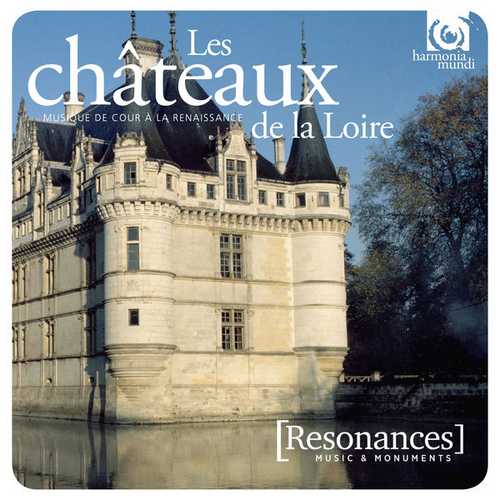
Composer: Thoinot Arbeau, Guillaume Boni, Jean de Castro, Pierre Certon, Loyset Compère, Gabriel Coste, Henry Fresneau, Nicolas Gombert, Clément Janequin, Orlando di Lassus, Philippe de Monte, Ninot le Petit, François Regnard, Pierre Regnault dit Sandrin, Albert de Rippe, Pierre de la Rue, Claudin de Sermisy, Adrian Willaert
Performer: Ensemble Clément Janequin
Conductor: Clement Janequin
Number of Discs: 2
Format: FLAC (tracks)
Label: Harmonia Mundi
Catalogue: HMX290855051
Release: 2016
Size: 671 MB
Recovery: +3%
Scan: yes
CD 01
Janequin: Messe “La Bataille”
01. I. Kyrie
02. II. Gloria
03. III. Credo
04. IV. Sanctus
05. V. Agnus Dei
06. Arbeau: Orchésographie: Jouyssance vous donneray – Three French Corantos- Basse Danse ‘La Roque’- Recercada segunda
07. Regnard: Ni nuit ne jour
08. Boni: Rossignol mon mignon
09. Boni: Las ! sans espoir
10. Castro: Je suis tellement langoureux
11. Rippe: Fantaisie II pour luth
12. Castro: Quand je dors
13. Boni: Ha, bel accueil
14. Monte: Le premier jour du mois de mai
15. Arbeau: Orchésographie: Pavane. ‘Belle qui tiens ma vie’ (Gaillarde) ‘La Traditore my fa morire’ (Gaillarde) ‘Anthoinette’ (Gaillarde) ‘J’aymerois mieulx dormir seulette’ (La volte)
16. Lassus: Une puce j’ay dedans l’oreille
17. Lassus: La nuict froide & sombre
18. Sandrin: Doulce memoire (Cancion)
19. Certon: Finy le bien (Response de “Doulce mémoire”)
20. Arbeau: Orchésographie: Bransles de Champagne couppez
CD 02
01. Compère: Nous sommes de l’ordre de Saint Babouyn
02. Rue: Autant en emporte le vent
03. Sermisy: Je ne menge point de porc
04. Gombert: Mille regres
05. Petit: N’as tu poinct mis ton hault bonnet
06. Sermisy: Vien tost
07. anon.: La Brosse – basse danse pour violes
08. Guiard: Or oiez les introites de taverne
09. Primus: Ce n’est pas trop
10. Willaert: Dessus le marché darras
11. Gombert: Puisqu’ainsi est
12. anon.: Las il n’a nul mal
13. Sermisy: Las, je my plains
14. Gombert: Je prens congies
15. Clemens: Une fillette bien gorriere
16. Clemens: Imcessament suis triste et doloreux
17. Celliers de Hesdin: Ramonez moy ma cheminée
18. Clemens: Du laid tetin
19. Prez, Josquin Desprez: Scaramella
20. anon.: Pavane et Gagliarde de “La Guerre” pour violes
21. Pipelare: Fors seulement
22. Certon: La, la, la, je ne l’ose dire
23. Fresneau: Souspir d’amours, pensée de plaisir
24. Coste: Celle fillette a qui le tetin point
25. Gombert: A bien grant tort
26. Fresneau: La Fricassée
In the 15th and 16th centuries, the Royal court resided from time to time in the Loire Valley. Its châteaux were the showcase for an intense musical life. These palaces which have since become the emblems of the French Renaissance resounded to music that today’s artists have rediscovered in concert and on record. Drawing widely on that repertoire, this programme is an evocation of the round of pleasures, festivities, hunts and dances that regulated the days and nights of the court of France, and of the ‘joyous life’ that reigned there for decades.
The Loire, the royal river, has witnessed the births and welcomed the visits of many artists along its banks. One can still visit Rabelais’s birthplace in La Devinière, a stone’s throw from Seuilly, the scene of the famous “picrocholine war”. Preserved forever in its historic setting, the house where Balzac stayed in Saché has become a museum; and the memory of Clément Janequin is present in Anjou, in Angers, and in Montreuil-Bellay.
This glorious past is evoked in this album by the Ensemble Clément Janequin. Driven by Dominique Visse, it contains a selection of sacred and secular works that could be heard in the many royal castles of the Loire Valley, which is now listed as a UNESCO World Heritage Site.
During the reign of Francis I around 1520, music punctuated the acts and events of everyday life, with the plain-chant Chapel (for twelve singers) and Chapel music for most common obligations. Blaring trumpets were the attributes of power as were timpani, fifes and drums. This official, military-sounding music was balanced out by more intimate music devoted to delighting the senses. The innumerable musical settings of poems by the King, Marot, Chappuys and Mellin de Saint-Gelais, himself a noted singer and lutenist, as well as their arrangements for instruments, testify to an intense collaboration of which the King’s Chamber was the crucible. This collaboration continued after 1550 and saw the emergence of the new poetic generation of Ronsard and du Bellay.